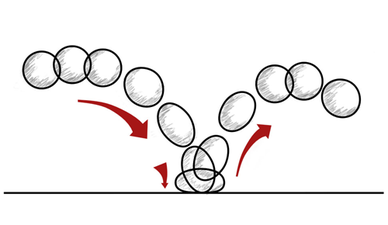Squash and stretch is the first principle of animation and in my opinion probably one of the most important ones. The best and most famous example of this would be the action of a ball bouncing and this gives the animator the ability to create the illusion of weight and volume. If a rubber ball bounced it would have some flexibility to it, whereas if it was a wooden ball there would be no flexibility to it; this means it can also be used to suggest what material the object is made of. A good tip would be to keep your volume of squash and stretch constant when animating to make it more 'realistic'. Another thing to keep in mind is that when an object is squashed or stretched it does not loose or gain volume, the volume is always the same, so you have to imagine the volume just in a different shape.
Bibliography: LINK 1


No comments:
Post a Comment